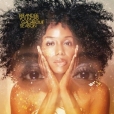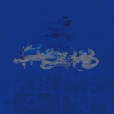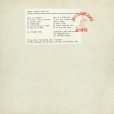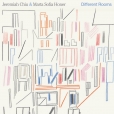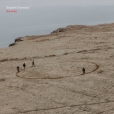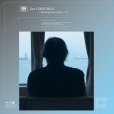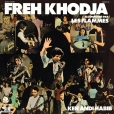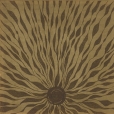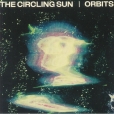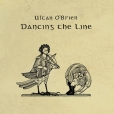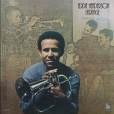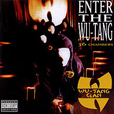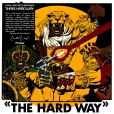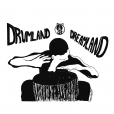Your basket is empty

‘Naqvi’s electronics, Smith’s trumpet and Cyrille’s percussion acquiesce with finesse in a perfect simpatico balance of accommodating and complimentary interplay. The trio balance bursts of energy with delicate stillness to create a feeling of meditation. Nuanced, textural, subtle yet devastatingly affective as well as sensitive and contemplative where appropriate, they also deliver bursts of incredible energy and impact; navigating a path between expressions of dismay and meditative healing resolutions – both a protest and paean for harmony.’
‘Killer!’, says Gilles Peterson.
‘Exquisitely constructed… They are not landscapes to be admired at a distance, but inscapes to be explored with attentive care’ (The Wire).
‘Solace for the soul’ (All That Jazz).
The great Algerian diva of Arab song — a Dilla favourite, incidentally — accompanied by a full-sized orchestra, augmented by electric guitar and organ, in a characteristically grooving, classy composition by her old man Baligh Hamdi. This reissue features newly remastered audio, the original cassette artwork, and a two-page insert with a new introduction by Mario Choueiry from the Institut du Monde Arabe
Playing Alice Coltrane’s very own, restored harp, leading her longtime trio of Rashaan Carter on bass and Alan Mednard on drums (with contributions by Shabaka, Meshell Ndegeocello, Makaya McCraven, and co).
“We’ve all spent the past two or three years on the road and so there’s a personal and musical familiarity when we come to record together. Since Rashaan also produced the album and we decided to record it all at my home, it created a comfortable intimacy that kept us honest, since there was no one else there except for us. It produced spontaneous improvisations on tracks like Reckoning and Discernment, which came about entirely in the moment. While on End Means I had the time to decide on using an extended technique on harp, which muffles the string like a kalimba. You hear those moments come through far more on this album than any others I’ve created.”
“Everyone who featured on the record came through organically and it all fed into the overall theme of the album, which is playfulness. The gadabout is someone who is looking for happiness and that’s something I’m always trying to do with my band, especially when we’re exhausted and on tour! Ultimately, this is an album about finding joy throughout the journey, which is something everyone can relate to.”
Electric guitar, pipe organ, and drums; a mix of new compositions and interpretations of traditional folk songs.
‘A spellbinding affair that roars with innovation’ (All About Jazz).
‘A startling, contemplative, and utterly brave recording’ (All Music).
‘Simple, sublime melodies… ****1/2’ (Downbeat).
Legendary, stone-classic jazz-funk from 1977; produced by Wayne Henderson for At Home.
A baker’s dozen of rare or unreleased dub instrumentals by Augustus Pablo at the height of his powers, mixed at King Tubbys.
First the set of Prince Philip dubplates from Digikiller, stateside; now this from Only Roots in France.
Biff!... Baff!
Knockout stuff.
‘The first studio encounter between London-based duo Exotic Sin and Swiss percussionist Julian Sartorius. Six improvisatory paths, building at a relaxed pace; tactile and stripped-back, with room for the listener to enter into their evolving sound. Anchored by piano, delicate wood, metal, and air instruments, a fluid system of interactions develops: repeating, deepening, never fixed; not cyclical or linear, eschewing the guard-rail of recurring motifs; broad, forward-looking, and fleet of foot.’
Double helpings of riotous, classic dancehall recorded for Jah Thomas’s Midnight Rock label, but previously only issued as a promotional white label. The rhythms are by the Roots Radics, at Channel One. One side each for the deejays, brandishing lyrical cutlasses fit to kill. Early days for Super Cat, but his irresistible rise is already up in your face, plain as day.
‘Quietly multi-rhythmic, modular-trance-meets-processed-and-unprocessed-chamber strings, bewitching and bewildering field recordings all knitted tightly, an LA patchwork.’
“Our studios are side-by-side. When we were writing this album, you might have found us tracking viola stacks in one studio while, in the other, we were writing through-composed themes and rearranging the material. Granular synthesis and tape manipulation are key tools we use to create variation and movement in a composition. This process often yields surprising results, capturing the emotion but expressing it in unexpected ways. It feels essential that we embrace a bit of chance.
“In contrast to our first album, Recordings from the Aland Islands, we wanted this music to feel very present. Where Recordings was intended to transport you to another place, Different Rooms is meant to meet you where you are. It’s a decidedly urban album. The field recordings were captured on rain platforms, in city streets, in rooms at home, and intentionally paint a quotidian sonic image, blurring the line between what you hear in your own environment and what is on the record.”
Featuring Jeff Parker.
This is terrific; warmly recommended.
‘Brìghde Chaimbeul is a leading purveyor of celtic experimentalism and a master of the Scottish smallpipes; a bellows-blown, mellower cousin to the famous Highland bagpipes. A native Gaelic speaker, Brìghde roots her music in her language and culture. She rose to prominence as a prodigy of traditional music, but has since begun a journey to take the smallpipes into unchartered territory. She has devised a unique way or arranging for pipe music that emphasises the rich textural drones of the instrument; the constancy of sound that creates a trance-like atmosphere, played with enticing virtuosic liquidity. She draws inspiration from the world of interconnected piping traditions, but her most recent album brings in influence from ambient, avant garde and electronic music.’
A lovely, fresh, intimate, uncluttered blend of nu soul and glo-fi, from Brighton.
The first reissue of this set, recorded in Paris in 1975, jubilantly blending funky Algerian rock and other North African sounds with jazz, Latin, boogie… A two-page insert carries new liner notes.
Roiling, cascading, highly charged, deeply emotional piano improvisations by this Dutch-born, Columbia-trained chemist, who was an early follower of Gurdjieff.
Nyland released sixteen transcendent albums — nowadays pretty much vanished — of spiritual pianism on his own Gage Hill Press, starting in the mid-sixties. Each LP came with stunning woodcut artwork by Nyland’s wife, Ilonka Karasz (who also designed covers for the New Yorker); and highly refined black-and-white photography.
Piano Studies 337 is a particularly tempestuous performance that Nyland himself recommended to Ansel Adams as a good entry-point to his music.
Heavy Al Campbell productions given the golden touch by three master engineers — Channel One dons Stanley ‘Barnabas’ Bryan and Lancelot ‘Maxie’ Mackenzie, and the one and only Hopeton Brown.
It was Al Campbell who produced Linval Thompson’s classic sides. Barnabus started up with Channel One when he was still at school; he was deejay for the sound; he learned mixing from Tubby; Sly taught him drums. Maxie was the technical whiz who built Channel One’s studio and sound-system amplifiers.
Originally out on Silver Kamel in 1981.
‘Deep and haunting; a dense tapestry of layered percussion, time-warped tape loops, and spiralling drumgita figures, all underpinned by hypnotic improvisations from Brazilian pianist Rafael Dos Santos. Privately pressed in 1982, it is both ecstatic and unsettling, a landmark recording in black British experimental music.’


